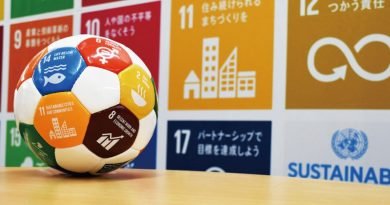Sustainability at Tokyo 2020: Environment and Biodiversity
by Chiara Aruffo
Environment and biodiversity are among the five main themes of the Tokyo 2020 sustainability plan ‘Be better, together – For the planet and the people’.
Talking about the environment and biodiversity in a highly urbanized context like Tokyo, it is not an easy task. The organizers together with the Tokyo Metropolitan Government (TMG) set up a plan to build a new urban system aiming at restoring and preserving ecological systems. The initiatives proposed are in line also with the Sustainable Development Goals that we discussed earlier, such as access to clean water and sanitation, building sustainable cities and communities. The 2019 test events provided an opportunity to test and calibrate many of the planned measures, for example with regard to heat and water quality.
Heat-related measures
In the Tokyo region, summer temperatures often reach alert levels (over 35 °C during the day), therefore it was necessary to establish countermeasures to preserve the health of athletes, staff and spectators (originally planned before the COVID emergency). Among these, the Tokyo 2020 Cooling project includes the construction of shaded areas, the distribution of refreshing drinks and a series of activities designed specifically to reduce exposure to the heat.
Water quality at the Odaiba Marine Park
The Odaiba Marine Park area, where marathon swimming and triathlon events will take place, underwent numerous tests on water quality. In the summer of 2019, a deterioration in water conditions due to the effect of rain resulted in a proliferation of coliform bacteria, exposing athletes to health-related risks. The use of water screens with one-layer filters during the tests showed already some improvements, it has therefore been decided to use three-layer filters for additional protection during the Olympic Games. This is not the first time that open-water locations have been the subject of concern by athletes, for example the Guanabara Bay in Rio 2016 was still heavily polluted just weeks before the start of the Games.

A greener city
The organizers want to leave a greener Tokyo as a legacy of the Games, with more than 70,000 new trees planted around the Olympic venues, also to increase shaded areas to contrast the heat wave. Where necessary to make space for new constructions, existing trees have been transplanted to other areas. In addition, the streets of Tokyo will have an extra touch of colour thanks to flowers planted by local communities.
Biodiversity and nature, the Kasai Canoe Slalom Centre
Biodiversity is a vast topic and touches upon many aspects of the organization of the Olympic Games. The organizing committee included this aspect also in the procurement of resources, where a system of certificates made sure that only companies committed to minimize environmental pollution will provide material for the Games.
Among the Olympic facilities, the Kasai Canoe Slalom Centre (where the canoe slalom competitions will be held) is a notable case as it is adjacent to the Kasai Marine Park. The park was categorized in 2018 as a wetland of international importance under the Ramsar Convention, therefore any use is closely monitored.

In previous articles we have discussed the Sustainable Development Goals, resource management and climate change in the context of Tokyo 2020.
Cover picture: olympics.org



